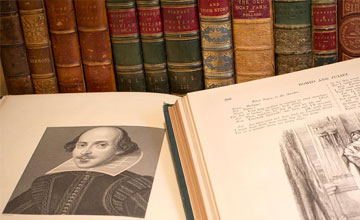Atsuko Sakaki
- Courses7
- Reviews11
- School: University of Toronto
- Campus: St. George Campus
- Department: Literature
- Email address: Join to see
- Phone: Join to see
-
Location:
Toronto, ON - Dates at University of Toronto: February 2002 - March 2019
- Office Hours: Join to see
Biography
University of Toronto St. George Campus - Literature
Experience
University of Toronto
Full Professor
Joined the Centre for Comparative Literature as Core Faculty.
University of Toronto
Associate Professor
Hired with tenure.
University of Toronto
Full Professor
Promoted to Full Professor
University of Tokyo, Graduate School of Arts and Sciences
Project Professor (Tokunin Kyōju)
Offered an intensive graduate seminar; conducted research.
University of British Columbia
Visiting Assistant Professor
Premdern Japanese Literature
Harvard University
Assistant Professor
Japanese Literature
Harvard University
Associate Professor
Japanese Literature
Education
The University of Tokyo
Master of Arts (M.A.)
Comparative Literature
The University of Tokyo
Bachelor of Arts (B.A.)
British Studies, Arts and Sciences
The University of British Columbia
Doctor of Philosophy (Ph.D.)
Asian Studies/Civilization
Publications
Translation / Transmediation Special Issue of Poetica: An International Journal of Linguistic-Literary Studies no. 78
Yûshôdô
Atsuko Sakaki is the guest editor of this issue, who wrote the introduction and contributed an essay.
Translation / Transmediation Special Issue of Poetica: An International Journal of Linguistic-Literary Studies no. 78
Yûshôdô
Atsuko Sakaki is the guest editor of this issue, who wrote the introduction and contributed an essay.
Obsessions with the Sino-Japanese Polarity in Japanese Literature
University of Hawai'i Press
Translation / Transmediation Special Issue of Poetica: An International Journal of Linguistic-Literary Studies no. 78
Yûshôdô
Atsuko Sakaki is the guest editor of this issue, who wrote the introduction and contributed an essay.
Obsessions with the Sino-Japanese Polarity in Japanese Literature
University of Hawai'i Press
The Woman with the Flying Head and Other Stories by Kurahashi Yumiko
M. E. Sharpe (1998); Routledge (2015)
Kurahashi Yumiko's original stories selected, translated from the Japanese and introduced by Atsuko Sakaki. Apparently now available in Kindle Edition.
Translation / Transmediation Special Issue of Poetica: An International Journal of Linguistic-Literary Studies no. 78
Yûshôdô
Atsuko Sakaki is the guest editor of this issue, who wrote the introduction and contributed an essay.
Obsessions with the Sino-Japanese Polarity in Japanese Literature
University of Hawai'i Press
The Woman with the Flying Head and Other Stories by Kurahashi Yumiko
M. E. Sharpe (1998); Routledge (2015)
Kurahashi Yumiko's original stories selected, translated from the Japanese and introduced by Atsuko Sakaki. Apparently now available in Kindle Edition.
The Rhetoric of Photography in Modern Japanese Literature: Materiality in the Visual Register as Narrated by Tanizaki Jun’ichirō, Abe Kōbō, Horie Toshiyuki and Kanai Mieko
Brill
In The Rhetoric of Photography in Modern Japanese Literature, Atsuko Sakaki closely examines photography-inspired texts by four Japanese novelists: Tanizaki Jun’ichirō (1886-1965), Abe Kōbō (1924-93), Horie Toshiyuki (b. 1964) and Kanai Mieko (b. 1947). As connoisseurs, practitioners or critics of this visual medium, these authors look beyond photographs’ status as images that document and verify empirical incidents and existences, articulating instead the physical process of photographic production and photographs’ material presence in human lives. This book offers insight into the engagement with photography in Japanese literary texts as a means of bringing forgotten subject-object dynamics to light. It calls for a fundamental reconfiguration of the parameters of modern print culture and its presumption of the transparency of agents of representation.
Translation / Transmediation Special Issue of Poetica: An International Journal of Linguistic-Literary Studies no. 78
Yûshôdô
Atsuko Sakaki is the guest editor of this issue, who wrote the introduction and contributed an essay.
Obsessions with the Sino-Japanese Polarity in Japanese Literature
University of Hawai'i Press
The Woman with the Flying Head and Other Stories by Kurahashi Yumiko
M. E. Sharpe (1998); Routledge (2015)
Kurahashi Yumiko's original stories selected, translated from the Japanese and introduced by Atsuko Sakaki. Apparently now available in Kindle Edition.
The Rhetoric of Photography in Modern Japanese Literature: Materiality in the Visual Register as Narrated by Tanizaki Jun’ichirō, Abe Kōbō, Horie Toshiyuki and Kanai Mieko
Brill
In The Rhetoric of Photography in Modern Japanese Literature, Atsuko Sakaki closely examines photography-inspired texts by four Japanese novelists: Tanizaki Jun’ichirō (1886-1965), Abe Kōbō (1924-93), Horie Toshiyuki (b. 1964) and Kanai Mieko (b. 1947). As connoisseurs, practitioners or critics of this visual medium, these authors look beyond photographs’ status as images that document and verify empirical incidents and existences, articulating instead the physical process of photographic production and photographs’ material presence in human lives. This book offers insight into the engagement with photography in Japanese literary texts as a means of bringing forgotten subject-object dynamics to light. It calls for a fundamental reconfiguration of the parameters of modern print culture and its presumption of the transparency of agents of representation.
Recontextualizing Texts: Narrative Performance in Modern Japanese Fiction
Harvard Asia Center (Distributed by Harvard University Press)






